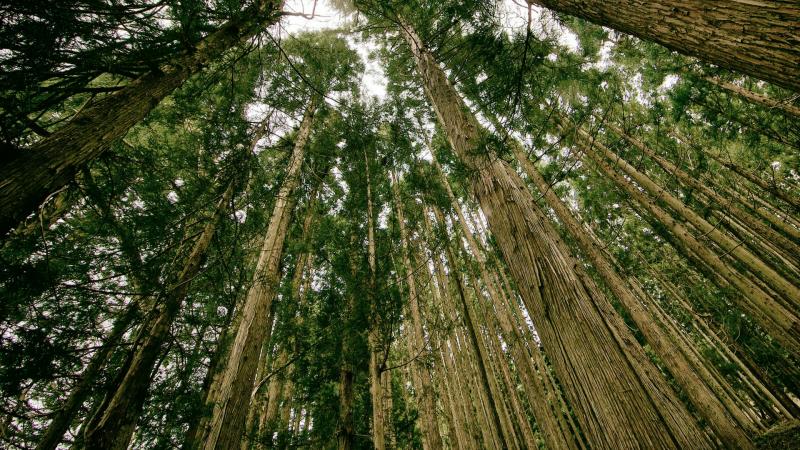
India is a land of diversity, and that applies to its biodiversity too! While parts of the forests of the Western Ghats are green throughout the year, some are deciduous, with trees shedding their leaves in some seasons. What drives this diversity? If one were to trace the evolution of trees, which of them evolved first—deciduous or the evergreen trees? How are trees changing and adapting to human interference? These questions are a step closer to the answer, thanks to a new study by an international team of researchers.
The team, consisting of researchers from the Concordia University, Canada; Quebec Centre for Biological Sciences, Canada; Ashoka Trust for Research in Ecology and the Environment (ATREE), Bangalore; French Institute of Pondicherry, Pondicherry and University of Agricultural Sciences, Bangalore, have used a multi-pronged approach to understand the diversity in trees. The study, published in the journal Forest Ecosystems, found that the presence of certain tree species in certain places, but not in others, is not random and that there is a reason behind the apparent haphazardness.
The researchers began their study by collecting data from 96 plots, each of one hectare, from the tropical forests of the Western Ghats located in the Uttara Kannada, Shimoga and Chikmagalur districts of Karnataka. They measured factors affected by changes in the climate, the different forest types like wet evergreen, moist deciduous and dry deciduous, and effects of human disturbance in these plots. They also collected data of the trees such as the sizes of their leaves and seeds, the density of the wood and the leaf size, seed size and its average mass, and wood density among others.
“Given the debates surrounding the evolution and formation of deciduous forests in the Indian subcontinent, we were interested in gaining insights about the evolution of these forests in the Western Ghats,” says Mr K Nagaraju Shivaprakash, a doctoral student at Concordia University and the lead author of the study. The researchers went about reconstructing the history of these trees by tracing back their lineages to figure out how and when these trees evolved. They also assessed the kind of tree diversity that is present and then used statistical analyses to predict the significant variables that determine the composition and distribution patterns of deciduous and evergreen vegetation in the study area.
The researchers found that an increase in precipitation and the aridity in a region increase the number of evergreen tree species and decrease the deciduous tree species in that region. Also, an increase in temperature increased the number of deciduous tree species but reduced that of evergreen tree species. The researchers point out that the availability of water is an essential factor that determines the type of tree species that can thrive in a region.
The researchers also found that human interference, in the form of logging, encroachment, lopping and grazing among others, is continuously changing the type of tree species in the region and evergreen tree species seemed to be at the receiving end. “Human disturbance significantly modifies the structure and composition of forests and evergreen forests are the most vulnerable to this kind of disturbance,” says Mr Shivaprakash. Deciduous trees do well in a ‘less-than-ideal’ environment compared to the evergreen ones, and so, in a region that is marred by human disturbance, deciduous trees are taking over. The researchers warn that if these activities continued unabated, the structure of the tropical forests in the Western Ghats could be irrevocably altered.
Despite this human disturbance, the researchers predicted that evergreen forests probably housed more diversity than deciduous ones. However, they were in for a surprise. “The taxonomic and evolutionary diversity should have been high in the evergreen forest, but that is not true,” says Mr Shivaprakash. Human disturbance is indeed taking a toll on evergreen forests, and biodiversity is ending up on the loser’s side.
Interestingly, the researchers also observed that evergreen and deciduous forest communities are very old—around 54 to 33 million years—and evolved independently of each other. However, as mentioned above, climate and human-mediated disturbance play a massive role in determining deciduous forest tree cover. While both tree species have evolved independently, in some places in the Western Ghats, deciduous formations have derived from evergreen vegetation “This is because in many locations human disturbance has created gaps in the canopy of the evergreen forest thus providing suitable habitat for the light-demanding deciduous species,” says Mr Shivaprakash.
Future climate predictions for India point out that we may end up with low rainfall and increased temperatures. According to the results of the study, in such scenarios, deciduous vegetation is set to be predominant. But, why would this be a problem, you ask? There are many problems with that change! “Evergreen forests are also major sinks for carbon and play a major role in preserving groundwater and recharging of rivers. People extract many products from evergreen forests such as spices, fuelwood and fruits among others”, says Mr Shivaprakash. If deciduous tree cover increases, biodiversity also takes a beating.
As a next step, the researchers are planning to study how future climate and land use changes alter the extent of deciduous and evergreen forest in the Western Ghats. Given the onslaught that this landscape is under, studies like this can inform policy by assessing what we stand to gain or lose.
